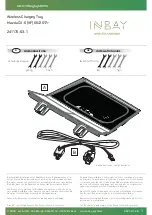
3. Reinstall the pressure relief cap.
4. Start and idle the engine until the upper radiator
hose is warm (this indicates the thermostat is open
and coolant is flowing through the entire system).
5. Shut the engine off and let it cool.
6. Remove the pressure relief cap from the engine
coolant reservoir as previously outlined.
7. Add a
50/50 mixture
of engine coolant and
distilled water to the engine coolant reservoir until
the coolant level is at the “cold fill level” as listed on
the reservoir.
8. Reinstall the pressure relief cap.
9. Check the coolant level in the reservoir before
you drive your vehicle the next few times (with the
engine cool).
10. If necessary, add a
50/50 mixture
of engine
coolant and distilled water to the engine coolant
reservoir until the coolant level is at the “cold fill
level” as listed on the reservoir.
After any coolant has been added, check the coolant
concentration (refer to
Checking Engine Coolant
).
If the concentration is not 50/50 (protection to –34°
F/–36° C), drain some coolant and adjust the
concentration. It may take several drains and
additions to obtain a 50/50 coolant concentration.
Whenever coolant has been added, the coolant level
in the coolant reservoir should be checked the next
few times you drive the vehicle. If necessary, add
enough 50/50 concentration of engine coolant and
distilled water to bring the liquid level to the proper
level.
If you have to add more than 1.0 liter (1.0 quart) of
engine coolant per month, have your dealer check
the engine cooling system. Your cooling system may
have a leak. Operating an engine with a low level of
coolant can result in engine overheating and possible
engine damage.
Steering linkage lubrication
The front and rear tie rod ends on this vehicle have
high temperature seals with greaseable fittings. The
Maintenance
20













































